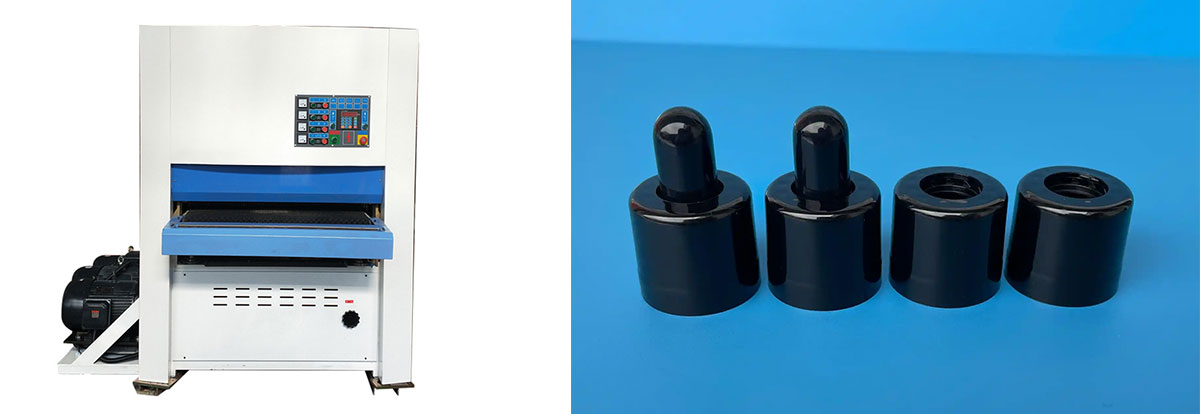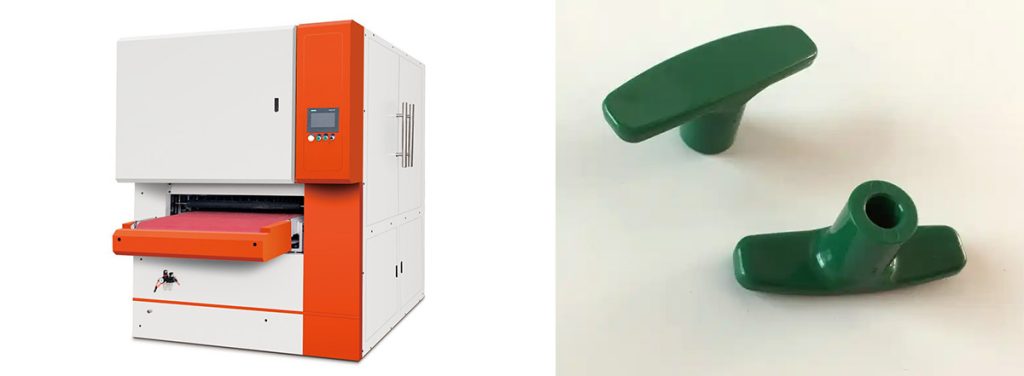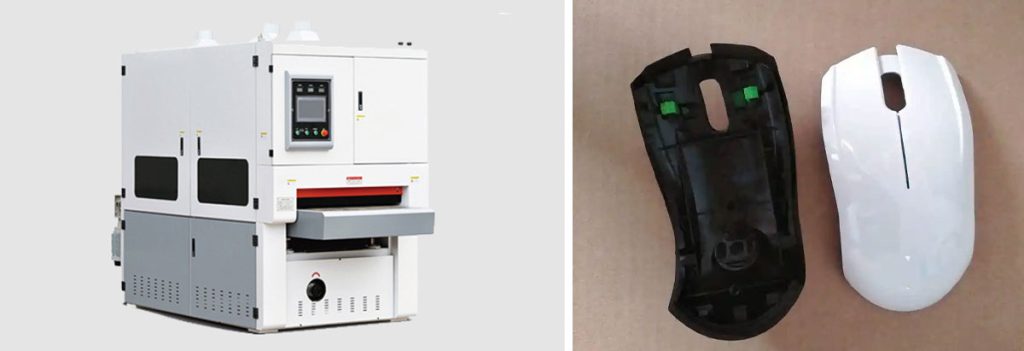

Operating a buffing machine for plastic demands strict attention to safety. Improper handling can lead to severe injuries or damage to the material being worked on. Users must recognize the potential hazards, including flying debris, overheating, or accidental contact with the rotating parts. Wearing appropriate protective gear and following established guidelines minimizes these risks. Adhering to safety measures ensures not only personal protection but also the efficient functioning of the equipment. Prioritizing safety at every step safeguards both the operator and the workpiece.
Key Takeaways
- Always wear safety gear like goggles, gloves, and a mask. This protects you from flying bits and harmful dust.
- Keep your workspace tidy and neat. Remove mess to stay focused and work safely.
- Check the buffing machine often. Look for damage to keep it working well and safely.
- Set the machine to match the plastic type. Use the right speed to stop overheating or breaking it.
- Pay attention while using the machine. Don’t get distracted or do other tasks to stay in control.
Understanding the Buffing Machine for Plastic
What Is a Buffing Machine for Plastic?
A buffing machine for plastic is a specialized tool designed to polish and smooth plastic surfaces. It enhances the appearance of plastic items by removing scratches, blemishes, or imperfections. This machine operates by using a rotating wheel or pad, often combined with buffing compounds, to achieve a glossy and refined finish. Industries rely on this equipment to meet high-quality standards for plastic products.
The versatility of a buffing machine for plastic makes it essential in various sectors. For example, the medical industry uses it to polish plastic components for devices. The automobile sector employs it to refine plastic parts like dashboards and trims. Other industries, such as electronics, food and beverages, and displays, also benefit from its ability to create smooth and visually appealing surfaces. The table below highlights some industries where this machine plays a critical role:
| Industry |
|---|
| Medical |
| Automobile |
| Electrical |
| Electronics |
| Displays |
| Enclosures |
| Vitrines |
| Food & Beverages |
Key Components and Their Functions
Understanding the components of a buffing machine for plastic is crucial for safe and effective operation. Each part serves a specific purpose, contributing to the machine’s overall functionality.
- Motor: The motor powers the machine, driving the rotation of the buffing wheel. A reliable motor ensures consistent performance during polishing tasks.
- Buffing Wheel: This is the primary component that comes into contact with the plastic surface. It can be made of materials like cotton, felt, or synthetic fibers, depending on the desired finish.
- Wheel Guard: The wheel guard protects the operator from debris or particles that may fly off during the buffing process.
- Speed Control: This feature allows the user to adjust the rotation speed of the buffing wheel. Different plastics may require specific speeds for optimal results.
- Base or Stand: The base provides stability to the machine, ensuring it remains steady during operation.
- On/Off Switch: This switch controls the power supply to the machine, allowing the operator to start or stop it safely.
Each component works together to ensure the buffing machine for plastic delivers precise and polished results. Familiarity with these parts helps operators use the machine efficiently while minimizing risks.
Essential Protective Gear for Safety
Operating a buffing machine for plastic requires the use of personal protective equipment to minimize risks. Proper protective gear shields the operator from potential hazards such as flying debris, heat, and noise. Neglecting these precautions can lead to injuries or long-term health issues.
Eye and Face Protection
Protecting the eyes and face is essential when using a buffing machine. Flying debris or splashes from buffing compounds can cause serious harm. Operators should wear safety goggles with side shields to guard their eyes effectively. For additional protection, a face shield combined with safety glasses is recommended. This combination ensures comprehensive coverage against splashes and spatters.
Respiratory Protection
Buffing plastic can release fine particles and fumes into the air. Inhaling these substances may lead to respiratory problems over time. Operators should use a respirator or dust mask to filter out harmful particles. A well-fitted mask ensures clean air intake, reducing the risk of inhaling hazardous materials. This precaution is particularly important in poorly ventilated workspaces.
Protective Clothing and Hair Safety
Appropriate clothing and hair safety measures are crucial for safe operation. Loose clothing or accessories can get caught in the rotating parts of the machine, leading to accidents. Operators should wear fitted clothing and avoid jewelry. Gloves protect hands from sharp edges and heat generated during the buffing process. Long hair should be tied back securely to prevent entanglement with the machine.
Tip: Always inspect personal protective equipment before use to ensure it is in good condition.
By prioritizing personal protective equipment, operators can create a safer working environment and reduce the likelihood of accidents.
Proper Setup of the Buffing Machine for Plastic
Preparing the Workspace
A well-prepared workspace ensures safe and efficient operation of a buffing machine for plastic. Operators should follow these steps to create an organized and hazard-free environment:
- Understand the basics of the buffing machine and its components to follow safety protocols effectively.
- Wear personal protective equipment (PPE), including goggles, gloves, and a dust mask, before starting any setup.
- Inspect the buffing wheel for wear or damage. Replace it if necessary to avoid accidents.
- Check the machine’s speed settings to ensure they match the requirements for plastic buffing.
- Remove unnecessary items from the work area to prevent clutter and accidents.
- Keep the workspace clean by wiping away dust, debris, or spilled compounds.
- Ensure proper ventilation to reduce exposure to fumes or fine particles.
Tip: A clean and organized workspace reduces distractions and enhances focus during operation.
Adjusting the Machine for Plastic Buffing
Proper adjustments to the buffing machine optimize its performance and ensure safety. Operators should secure the machine on a stable surface to prevent movement during use. Adjust the buffing wheel to the correct height and angle for the workpiece. This alignment minimizes strain on the operator and ensures even polishing. Set the rotation speed according to the type of plastic being buffed. Softer plastics may require lower speeds to avoid overheating or damage. Always test the machine on a small piece of plastic to confirm the settings are appropriate.
Note: Regularly check the machine’s alignment and speed settings during operation to maintain consistent results.
Organizing Tools and Materials
Organized tools and materials improve workflow and reduce the risk of accidents. Place buffing compounds, cleaning cloths, and additional wheels within easy reach. Store sharp tools or accessories in designated containers to avoid injuries. Arrange the workpiece securely on a stable surface before starting the machine. Label different buffing compounds to prevent confusion and ensure the correct one is used for plastic. Operators should also keep a checklist of required items to avoid interruptions during the process.
Reminder: Proper organization saves time and helps maintain focus while operating the machine.
Maintaining Focus and Safe Practices During Operation
Avoiding Distractions

Distractions can compromise safety when operating a buffing machine for plastic. Operators should eliminate potential interruptions before starting the machine. Mobile phones, loud music, or unrelated conversations can divert attention and increase the risk of accidents. Keeping the workspace quiet and focused ensures better concentration. Operators should also avoid multitasking during the process. Focusing solely on the task at hand reduces errors and enhances precision. Regular breaks can help maintain alertness, especially during long sessions.
Tip: Establish a routine to check for distractions before beginning work. A distraction-free environment promotes both safety and efficiency.
Safe Body Positioning and Hand Placement
Proper body positioning minimizes strain and prevents accidents. Operators should stand directly in front of the buffing wheel to maintain control. Feet should remain shoulder-width apart to provide stability. A firm grip on the workpiece ensures it stays secure during operation. Applying excessive pressure can cause the piece to catch on the wheel, leading to potential hazards. Smooth, controlled movements guide the workpiece effectively and reduce the risk of mishaps.
Note: Ergonomic practices not only enhance safety but also reduce fatigue during extended use of the machine.
Handling the Workpiece Securely
Secure handling of the workpiece is essential for achieving a polished finish and avoiding accidents. Operators should inspect the workpiece for sharp edges or irregularities before starting. Holding the piece firmly with both hands ensures better control. It is important to keep fingers and hands away from the rotating wheel to prevent injuries. Operators should also avoid overloading the machine with large or heavy pieces that exceed its capacity. Testing the setup on a small section of the workpiece can confirm that the machine settings are appropriate.
Reminder: Always handle the workpiece with care to maintain safety and achieve optimal results.
Handling Buffing Compounds Safely
Selecting The Right Buffing Compound For Plastic
Choosing the correct buffing compound is essential for achieving a smooth and polished finish on plastic surfaces. Each type of plastic requires a specific compound to avoid damage and ensure optimal results. Operators should consider the material’s hardness and the desired level of shine when selecting a compound. For example, softer plastics benefit from gentler compounds, while harder plastics may require more abrasive options.
Manufacturers often label buffing compounds based on their intended use. Operators should read these labels carefully to match the compound with the plastic being polished. Using an incompatible compound can lead to scratches or discoloration. Testing the compound on a small, inconspicuous area of the plastic helps confirm its suitability. This step prevents costly mistakes and ensures the final product meets quality standards.
Tip: Keep a variety of buffing compounds on hand to handle different types of plastic effectively.
Applying Buffing Compounds Correctly
Proper application of a buffing compound ensures a consistent and professional finish. Operators should follow these steps to apply the compound effectively:
- Surface Preparation: Clean the plastic surface thoroughly to remove dirt and debris. A clean surface allows the compound to adhere evenly.
- Selection of Buffing Compound: Choose the appropriate polishing compound based on the material and desired finish.
- Selection of Buffing Equipment: Use the correct buffing wheel or pad for the task. Different wheels work better with specific compounds.
- Execute the Buffing Technique: Apply the compound evenly to the buffing wheel. Use consistent pressure and maintain a steady speed while polishing the plastic.
Operators should avoid overloading the buffing wheel with the compound. Excessive amounts can create uneven results and waste material. Reapply the compound as needed during the process to maintain its effectiveness. Regularly inspect the surface to ensure the polishing compound is working as intended.
Reminder: Always store buffing compounds in a cool, dry place to preserve their quality.
Regular Inspection and Maintenance of the Buffing Machine
Inspecting the Machine for Wear and Tear
Regular inspections help identify potential issues before they become serious problems. Operators should begin by visually examining the buffing wheel before each use. Frayed edges, embedded debris, or uneven wear can compromise safety and performance. Damaged wheels should be replaced immediately to avoid accidents or poor results.
The balance of the buffing wheel is another critical factor. An unbalanced wheel can cause excessive vibrations, leading to uneven finishes and increased wear on the machine. Using a wheel balancing kit ensures the wheel operates smoothly. Operators should also monitor the machine’s motor and speed control for any irregularities. Unusual noises or inconsistent speeds may indicate mechanical issues that require attention.
Routine inspections extend the lifespan of the machine and ensure consistent performance. By addressing wear and tear promptly, operators can maintain a safe and efficient workspace.
Cleaning and Storing the Machine Safely

Proper cleaning and storage practices preserve the functionality of the buffing machine. After each use, operators should clean the buffing wheel to remove residues, compounds, and contaminants. A clean wheel ensures better results and reduces the risk of damage to the workpiece.
Buffing wheels should be stored in a clean, dry environment to prevent dust accumulation. Protective sleeves or bags can keep the wheels free from debris when not in use. Periodic lubrication of cotton or cloth wheels with buffing wheel grease or wax reduces friction and prolongs their lifespan.
The machine itself requires attention as well. Operators should wipe down the machine to remove dust and polish residues. Storing the machine in a dry, well-ventilated area prevents rust and corrosion. Handling the buffing wheels with care during cleaning and storage avoids accidental damage.
By following these steps, operators can ensure the machine remains in excellent condition, ready for future use.
Conclusion
Operating a buffing machine for plastic safely requires strict adherence to essential precautions. Key safety measures include wearing personal protective equipment (PPE) like goggles, gloves, and hearing protection. Properly setting up the buffing wheel, checking for wear or damage, and maintaining the recommended speed settings are equally important. Operators should stay focused, avoid distractions, and keep the workspace clean to minimize risks. Regular inspection and maintenance ensure the machine operates efficiently and safely.
Reminder: Safety is non-negotiable. Prioritizing protective gear, proper setup, and routine maintenance prevents accidents and ensures effective operation. By following these guidelines, operators can achieve polished results while safeguarding their well-being.
